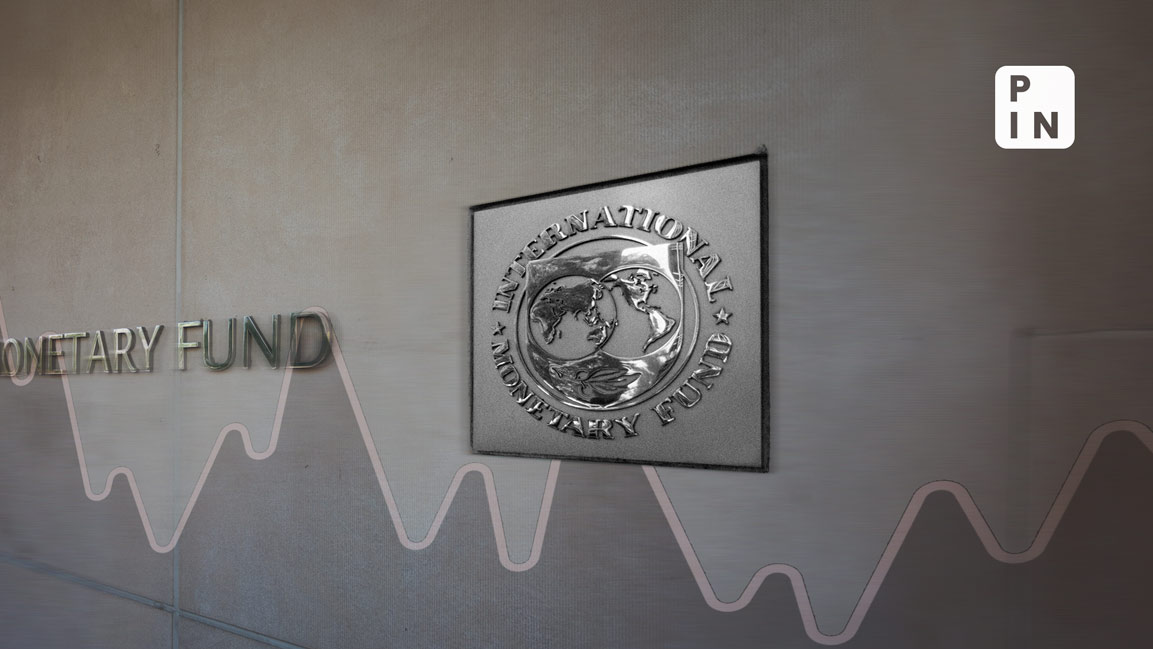- | 7:00 pm
IMF points to divergence of views on RBI forex interventions
IMF suggests RBI excessively interfered in forex market, but central bank says it intervenes to curb excessive exchange rate volatility

India’s exchange rate flexibility should remain the first line of defense in absorbing external shocks, with forex interventions limited to addressing disorderly market conditions, the International Monetary Fund (IMF) has said.
The IMF made the observation following the conclusion of its annual Article IV consultations with top Indian officials.
Under Article IV of its Articles of Agreement, an IMF staff team visits member countries every year to collect economic and financial information, and discuss with officials the country’s economic developments and policies. Following the team’s return to the headquarters, the staff prepares a report, which forms the basis for discussion by the executive board.
In its report, IMF said that between December 2019 and November 2022, the rupee had depreciated by about 15% against the dollar. However, over the past year, improved domestic macroeconomic stability, supported by tightening monetary policy, have helped attract capital inflows.
“But based on FXI (foreign exchange intervention) data that RBI publishes on a monthly basis, RBI has been using FXI to cushion the impact of external shocks, smooth market volatility, preclude emergence of disorderly market conditions, and opportunistically replenish its FX reserves,” IMF said in the report.
During December2022-October 2023, the rupee-dollar exchange rates moved within a very narrow range, suggesting that “FXI likely exceeded levels necessary to address disorderly market conditions.”
“The observed stability of the exchange rate prompted staff to reclassify India’s de facto exchange rate regime from ‘floating’ to ‘stabilized arrangement’ for that period, while the de jure classification remained ‘floating’,” IMF said.
A “stabilized exchange rate regime” refers to a situation where a country’s central bank actively intervenes in the forex market to keep the exchange rate relatively stable, as opposed to letting it fluctuate freely based on market forces.
“FX reserves are assessed at just above 100% of the IMF composite reserve adequacy metric for a stabilized exchange rate regime,” the report said, implying India’s forex reserves are more than sufficient according to international standards.
Going forward, a flexible exchange rate should act as the first line of defense in absorbing external shocks, the report added, suggesting that India should rely primarily on allowing its exchange rate to adjust naturally in response to external economic pressures, rather than heavily using its foreign exchange reserves or other interventions.
On its staff’s recent reclassification of India’s de facto exchange rate regime for the period December 2022 to October 2023, IMF said that “many of its directors noted the divergence of authorities’ views with that of staff and encouraged continued staff engagement on this issue, with a few directors encouraging staff and the authorities to resolve these differences.”
IMF said Indian authorities had highlighted that the central bank intervenes in the forex market to curb excessive exchange rate volatility.
“The RBI strongly disagreed with (IMF) staff’s assessment that FXI likely exceeded levels necessary to address disorderly market conditions and has contributed to the rupee-dollar moving within a narrow range since December 2022. RBI strongly believes that such a view is incorrect as, in their view, it uses data selectively,” IMF said.
“In their view, staff’s assessment is short-term and restricted to the last 6-8 months without any rationale for the same, and if a longer-term view of 2-5 years is taken, staff’s assessment would fail. In the authorities’ view, therefore, staff’s reclassification of the de facto exchange rate regime to ‘stabilized arrangement’ is unjustified,” it added.
“They noted that RBI’s FXI comply with the best principles of transparency since FXI data dissemination in the public domain complies with SDDS (Special Data Dissemination Standard) prescribed by IMF, and that the rupee continues to be a market determined currency, with no explicit/implicit target/band,” IMF said.
The authorities also stated that they remain committed to their stance of minimizing volatility for financial stability considerations but without any view on the level for the rupee. Moreover, in their view, the exchange rate’s stability in 2023 reflects the strength of macroeconomic fundamentals and improvements in India’s external position, particularly significant moderation in the current account deficit (CAD) and revival of capital flows on the back of a comfortable foreign exchange reserves buffer.
Overall, they noted that India’s macroeconomic stability also imparted stability to the exchange rate, IMF said.
RBI did not immediately respond to an email seeking comment on the IMF’s report.
Meanwhile, the IMF directors expressed satisfaction that India’s financial sector maintains stability and resilience, evident in the consistent growth of bank credit, low levels of non-performing assets, and the presence of sufficient capital and liquidity buffers.
The IMF’s executive board noted that the Indian economy showed robust growth in the past year. While headline inflation has, on average, moderated, it remains subject to volatility.
“Employment has surpassed the pre-pandemic level and, while the informal sector continues to dominate, formalization has progressed. The financial sector has been resilient—strongest in several years—and largely unaffected by global financial stress in early 2023,” IMF said.
“India has potential for even higher growth, with greater contributions from labor and human capital, if comprehensive reforms are implemented,” it said
The IMF directors also commended RBI’s proactive monetary policy actions and strong commitment to price stability, while agreeing that the current neutral monetary policy stance, anchored on a data-dependent approach, is appropriate and should gradually bring inflation back to the target.













